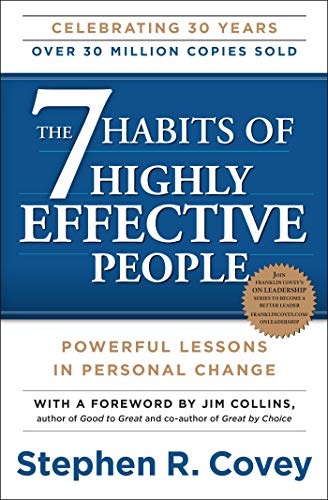Put First Things First - Covey's 7 Habits of Highly Effective People
Habit 3: Put First Things First
Covey’s 7 Habits of Highly Effective People
This week we are going to look into Covey’s 3rd habit: “Put First Things First”
To quickly surmise what we have covered earlier.
The first habit (Be Proactive) stipulates that you are in charge of your life. the second habit (Begin with the End in Mind) is a mental creation and is based on your ability to see the potential and create with the mind.
The third habit, then is the physical component. How to fulfil and actualise the outputs of habits 1 and 2.
Time Management
We are live in a time poor world. But it is also the one thing we have in common. We all have 168 hours a week. 168 hours to prioritise, to waste, to be productive in, to procrastinate in.
Before we go into Covey’s history of Time Management, it may be worth doing a quick exercise.
Have a look at the things you do in your life. Sleep, eat, study, work, socialise, travel etc. Now estimate how long you spend on each thing. I did the recently. The results were interesting. How about you? Have a go and see.
Is your week filled to the brim with tasks? With work, study, exercise, TV, social media, kids. Are you neglecting important things in your life? Friends, family, even just time to do nothing? Wonder why you feel so overwhelmed? Could you try reprioritising your time? What do you need to do more of, what can I cut down on. What things give you energy and what takes energy away?
It has been an interesting exercise for me and I hope it helps you.
The Four Generations of Time Management
This was really interesting for me. I didn’t know there were generations of Time Management. I thought there were different strategies and I have tried a few of them. Covey outlines 4 generations with each building on the last.
1. Notes and Checklists
The first generation is characterised by notes and checklists. For me this used to be lots of sticky notes before I graduated to a master ‘to-do list’. But I found that the items on the bottom of this list never got done and the list seemed to just get longer and longer.
2. Calendars and Appointment Books
The second generation is characterised by calendars and appointment books. I’ve never been very good and keeping calendars up to date but I know a lot of people at work who use them daily.
3. Prioritisation, goal setting and daily planning
The third generation focuses on prioritisation and comparing tasks with values. It focuses on setting goals and introduces the concept of daily planning. I have used the Bullet Journal system for the couple of years and I quite like it. It seems to be along the lines of the third generation. Perhaps, I’ll look at writing an article on the system in future.
4. Mange ourselves rather than time
The fourth generation looks to manage ourselves rather than manage time.
You’ve probably all heard of the matrix of urgency and importance. Some tasks are important and urgent, some are urgent but not important, some are important but not urgent and some are neither important nor urgent.
Importance refers to things that contribute to your mission, your values and your high priority goals. Urgent matters are usually right in front of us and press on us.
Photo by Rocky89/iStock / Getty Images
So often, we spend our days dealing with the urgent items. I used to call this, putting out bush fires. Any of you who have done this know that it is tiring. It dominates your time and you feel like you’re getting know where.
Covey argues that the important but not urgent tasks is where we should be concentrating. It includes things like building relationships, long-range planning, exercising, preventive maintenance and all those things we need to do but often don’t get around to doing because they aren’t urgent. These activities fall into Quadrant II.
So how do we move to Quadrant II?
Well we can’t rob from Quadrant I because these actives are still important. We need to get time from Quadrant III and IV. We have to say ‘no’ to these tasks.
Quadrant II tasks grow out of your principle centre. When you realise that, you’ll see that these tasks are an exciting place to invest your time. This will help you say ‘no’ to those things that aren’t important.
Covey suggests the following for planning for Quadrant II.
Identify your roles
Identify your roles as an individual. Husband/wife, roles at work, study, community groups.
Select Goals
Think of one or two goals that you feel you should accomplish in each role during the next seven days to be recorded as goals. Some of these should reflect Quadrant II activities and ideally they would be tied to longer-term goals.
Scheduling
Look at the week ahead and schedule in time to achieve your goals
Daily Adapting
Daily planning because daily adapting in response to unanticipated events, experiences and relationships.
I hope this helps you with your time management journey.









